If you have a peperomia plant and you notice the leaves are falling off, don’t panic! In this article, we’ll explain why this happens and what you can do to fix the problem. Peperomia plants are native to tropical and subtropical regions of the world, so they’re used to warm weather. However, they can sometimes experience leaf drop if the temperature gets too cold or if they’re not getting enough water. If you think your peperomia plant is experiencing leaf drop, check the temperature of the room it’s in and make sure it’s getting enough water. With a little care, you can get your peperomia plant back to good health in no time!
The Causes of Peperomia Leaves Falling Off
Peperomia leaves falling off can be caused by a number of things, including too much or too little water, pests, or disease.
If you think your peperomia is getting too much water, let the soil dry out completely before watering again. You can also try to increase the amount of light the plant is getting, as too little light can also cause leaves to fall off.
If you see any pests on the plant, such as aphids, mealybugs, or scale, try to remove them with a cotton swab dipped in rubbing alcohol. Pests can also be a cause of peperomia leaves falling off. If the infestation is severe, you may need to use an insecticide.

Common diseases that affect peperomias include root rot, fungal diseases, and viruses. If you think your plant has a disease, try to treat it with a fungicide or an appropriate pesticide. Finally, disease can also cause peperomia leaves to fall off.
1. Insufficient light
Move your plant to a brighter location and make sure to provide adequate ventilation. If your plant is not getting enough light, it will become leggy and the leaves will fall off. Peperomias are native to tropical and subtropical regions and require bright, indirect light to thrive. If your peperomia leaves are falling off, it may be due to insufficient light.
2. Excess Watering
If you’re not sure, it’s better to err on the side of underwatering. Overwatering can cause the leaves to turn yellow and drop off. If your peperomia leaves are falling off, it could be because you’re watering it too much. Make sure you’re only watering your peperomia when the soil is dry to the touch.
3. Underwatering The Plant
When the leaves are not getting enough water, they will start to droop and eventually fall off. This is because the plant is not getting enough water to support its leaves. If you think your plant is underwatering, make sure to water it more frequently. Underwatering your peperomia plant can cause the leaves to fall off.
4. Damp Soil
If your Peperomia leaves are falling off, it could be due to damp soil. If you think your plant is suffering from damp soil, try replanting it in a pot with drainage holes and using a potting mix that contains peat moss or perlite. If the soil is too wet, the roots will rot and the plant will die. Peperomia plants are native to tropical and subtropical regions and prefer moist, well-drained soil.
5. Planting Incorrectly
If they are planted in an area that is too cold or too dry, their leaves will start to fall off. Peperomia are native to tropical and subtropical regions and need warm, humid conditions to thrive. One of the most common reasons for peperomia leaves falling off is incorrect planting.
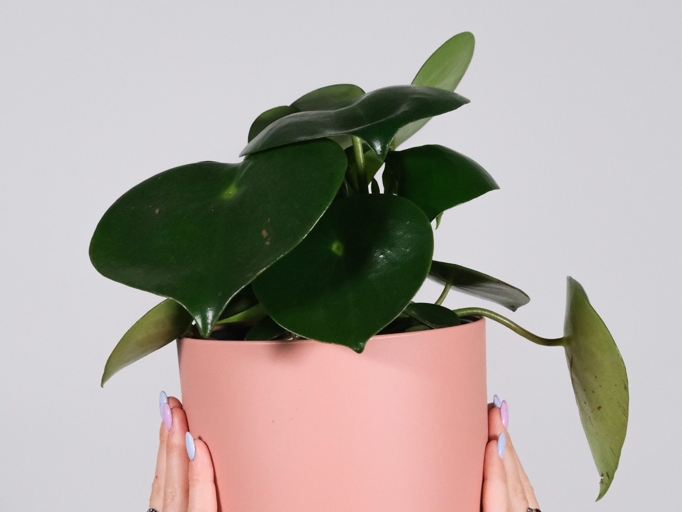
Another reason for incorrect planting is using the wrong type of soil. Peperomia need a well-draining, slightly acidic soil. If the soil is too dense or too alkaline, the leaves will start to fall off.
Finally, incorrect watering can also cause peperomia leaves to fall off. If the soil is too dry, the leaves will start to fall off. Peperomia need to be watered regularly, but the soil should never be allowed to dry out completely.
6. Low Humidity
In homes and offices, the air is often dry, which can cause the leaves of a peperomia to dry out and fall off. Peperomia plants are native to tropical and subtropical regions of the world, so they’re used to high humidity.

With a little extra moisture, your peperomia will thrive and its leaves will stay healthy and attached. Place the plant on a pebble tray, use a humidifier, or mist the leaves regularly. To prevent this, try to increase the humidity around your peperomia.
7. Extreme Temperatures
One possibility is that the plant is experiencing extreme temperatures, either too hot or too cold. Peperomias are tropical plants that prefer warm, humid conditions, so if the temperature drops too low, the leaves may fall off. If you notice your peperomia leaves falling off, it could be due to a variety of reasons. If you suspect that extreme temperatures are the cause of your peperomia’s leaf drop, try to provide the plant with a more consistent temperature and see if the leaf drop stops. Similarly, if the temperature gets too high, the leaves may also fall off.
8. Fertilizer Application Mistakes
Fertilizer Application Mistakes
However, applying fertilizer incorrectly can cause problems for your plants, including leaf drop. Here are eight common mistakes gardeners make when applying fertilizer to their peperomia plants: Fertilizer is essential for keeping your peperomia plants healthy and vigorous.
Applying too much fertilizer. 1.
Apply fertilizer at the recommended rate, and be sure to water your plants well after applying fertilizer to help dilute any excess. Too much fertilizer can burn the roots of your peperomia plants, causing leaf drop.
Applying fertilizer to dry soil. 2.
Fertilizer applied to dry soil can also burn plant roots. Be sure to water your plants before applying fertilizer, and always follow the manufacturer’s instructions.
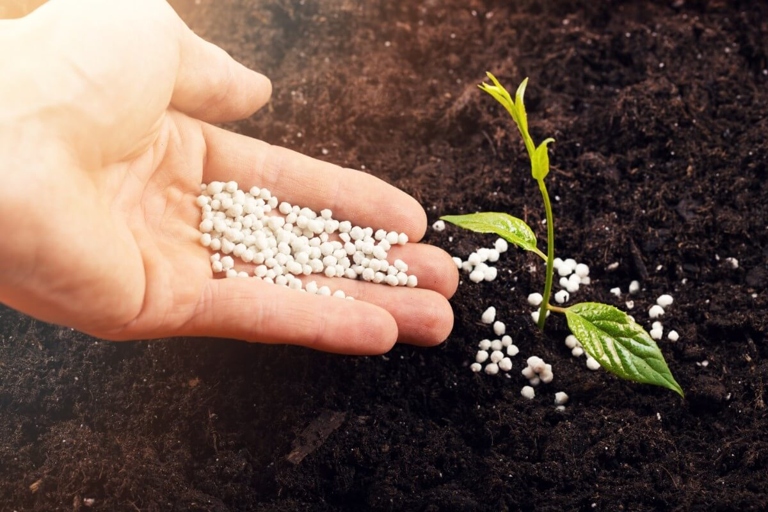
Applying fertilizer to wet leaves. 3.
Be sure to apply fertilizer to the roots of your plants, not the leaves. Fertilizer applied to wet leaves can cause leaf burn.
Applying fertilizer to stressed plants. 4.
Plants under stress from drought, pests, or disease are more susceptible to damage from fertilizer. Wait until your plants are healthy before applying fertilizer.
5. Applying fertilizer to cold soil.
Cold soil can damage plant roots, so wait until the soil has warmed up before applying fertilizer. In general, wait until after the last frost date in your area.
6. Applying fertilizer to hot soil.
Wait until the soil has cooled down before applying fertilizer. Hot soil can also damage plant roots.
Applying fertilizer to windy conditions. 7.
Apply fertilizer on calm days, and be sure to keep fertilizer away from leaves. Wind can blow fertilizer onto leaves, causing leaf burn.
Applying fertilizer to wet conditions. 8.
Apply fertilizer when the soil is dry, and be sure to water your plants well after applying fertilizer. Wet conditions can cause fertilizer to run off, wasting fertilizer and causing leaf burn.
9. Water Quality
Peperomias are native to tropical and subtropical regions and prefer high humidity and moist soil. If the air around your plant is too dry, the leaves will start to drop. If you notice your peperomia leaves falling off, it could be a sign that the plant is not getting enough water.

Make sure to empty the tray of water before it gets too low, or the roots of the plant could start to rot. The water will evaporate and help to raise the humidity around the plant. To increase the humidity, you can mist the leaves with water or set the pot on a tray of pebbles and water.
If you think your plant is not getting enough water, try increasing the frequency of watering. Peperomias are drought tolerant, so you don’t have to worry about overwatering. Just make sure the soil is moist, not soggy.
10. Infestation By Insects, Pests, And Diseases
If your peperomia leaves are falling off, it could be due to infestation by insects, pests, or diseases. These problems can often be controlled with proper care and treatment.
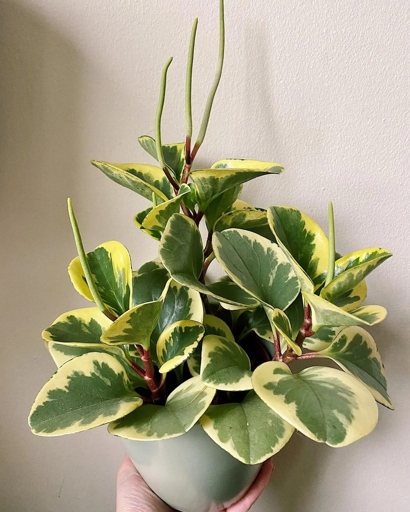
Insects such as aphids, mealybugs, and whiteflies can infest peperomias and cause the leaves to fall off. These pests can be controlled with insecticidal soap or neem oil.
These diseases can be controlled with fungicides. Diseases such as powdery mildew, root rot, and leaf spot can also cause peperomia leaves to fall off.
Proper care of your peperomia, including regular watering and fertilizing, will help to prevent infestation by insects, pests, and diseases.
11. Natural Aging
As we age, it’s not uncommon for our leaves to fall off. This is because our bodies are constantly producing new cells and shedding old ones. While this process is natural, there are a few things you can do to help your peperomia stay healthy and prevent leaves from falling off.
However, if they’re not getting enough water, their leaves will start to drop. First, make sure you’re watering your plant regularly. Peperomia are drought-tolerant, so you don’t want to overwater them.
Peperomia love humid environments, so misting them or placing them on a pebble tray can help keep their leaves from drying out and falling off. Second, give your plant some extra humidity.

However, if they’re not getting enough nutrients, their leaves will start to yellow and drop. Peperomia are light feeders, so you don’t want to overdo it. Finally, make sure you’re fertilizing your plant regularly.
By following these simple tips, you can help your peperomia stay healthy and prevent leaves from falling off.
12. Compact Soil
Once the roots have stabilized, the leaves should stop falling off. Soil that is too loose can cause the roots to become unstable, leading to leaf drop. To fix this, simply add some more compact soil to your plant’s pot. If you notice your peperomia leaves falling off, it could be due to a lack of compact soil.
13. Cold Draft/Frost
If the temperature drops below 50 degrees Fahrenheit, the leaves will start to turn brown and drop off. If you live in an area with cold winters, you’ll need to bring your peperomia indoors or grow it in a greenhouse. If your peperomia leaves are falling off, it could be due to a cold draft or frost. Peperomias are tropical plants that can’t tolerate cold temperatures.
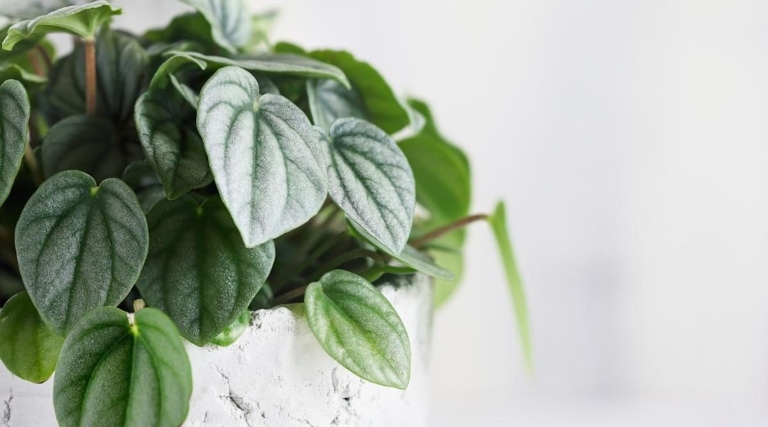
Move it away from windows and doors, and make sure it’s not near any air vents. If the temperature outside is cold, bring your peperomia indoors. You can also try covering it with a sheet or blanket at night to help insulate it. If you think a cold draft or frost is the cause of your peperomia’s leaves falling off, take action to protect your plant.
If your peperomia is already indoors, make sure the room it’s in isn’t too cold. You can raise the temperature by turning on a heater or placing the plant in a sunny spot. Peperomias prefer temperatures between 60 and 80 degrees Fahrenheit. If the room is too cold, the leaves will start to turn brown and drop off.
14. Yellowing And Leaves Falling
If you notice your peperomia’s leaves yellowing and falling off, it’s likely due to one of several common causes. underwatering, overwatering, or too much direct sunlight are all possible culprits.
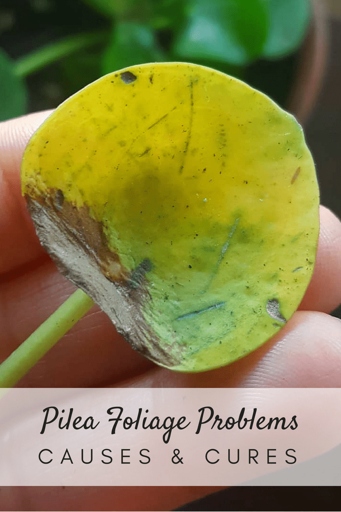
Allow the soil to dry out somewhat between watering to avoid overwatering, which can also lead to leaf drop. If you think you may be underwatering your plant, the first step is to check the soil. If it feels dry to the touch, it’s time to give your peperomia a good drink.
If you notice this happening, try moving your plant to a spot with indirect or filtered light. Too much direct sunlight can also cause leaves to yellow and fall off.
Finally, keep an eye out for pests like mealybugs, aphids, or spider mites, which can all cause leaf drop. If you see any of these pests on your plant, be sure to treat them immediately to prevent further damage.
Other peperomia problems
Allow the soil to dry out completely between waterings to avoid this problem. If the leaves start to yellow or drop off, it is a sign that the plant is getting too much water. Peperomias are not typically susceptible to many problems, but there are a few things that can go wrong. Overwatering is the most common issue, as peperomias are very sensitive to wet feet.
If you see these signs, water your peperomia deeply and then allow the soil to dry out completely before watering again. Peperomias can also suffer from under-watering, which will cause the leaves to wilt and the plant to become dormant.
If you see any pests on your plant, treat them with an appropriate insecticide. These pests can suck the sap out of the leaves, causing them to turn yellow and drop off. Peperomias can sometimes be affected by pests, such as mealybugs, aphids, or scale.
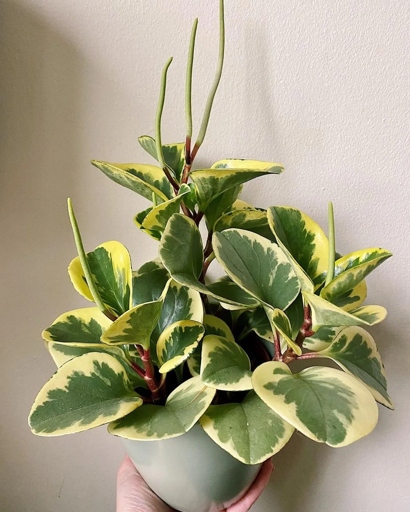
Finally, peperomias can be affected by diseases, such as root rot or leaf spot. These diseases are usually caused by too much water or by pests. If you see any signs of disease, treat the plant with a fungicide.
How To Prevent Peperomia Leaves From Dropping
Peperomia can tolerate a wide range of light conditions, but too much direct sun can scorch the leaves. Peperomia are native to tropical regions and prefer high humidity, so misting your plant or setting it on a pebble tray can also help. Finally, check for pests such as mealybugs, which can cause leaves to drop. If you see any pests, treat them with an appropriate insecticide. First, make sure that you’re watering your plant regularly and not letting it dry out. With a little care, your Peperomia should be back to its healthy self in no time! If you think your plant is getting too much or too little light, try moving it to a different spot. If you’re noticing that the leaves on your Peperomia are falling off more than usual, there are a few things you can do to help prevent this.
How often should you water a Peperomia?
These plants do not like to be kept too wet or too dry, so watering them once a week should be sufficient. Peperomia plants are native to tropical and subtropical regions of the world, so they are used to warm climates with high humidity. Conversely, if the leaves start to wrinkle or curl, that is a sign that the plant is not getting enough water. If the leaves of your Peperomia start to turn yellow or brown, that is a sign that you are watering it too much.
Why do Peperomia leaves turn black?
One possibility is that the plant is not getting enough light. Peperomia leaves may turn black for a number of reasons. Peperomia plants need bright, indirect light to thrive. If the plant is not getting enough light, the leaves may turn black.
If the leaves turn black and mushy, it is a sign that the plant is getting too much water. Peperomia plants are susceptible to root rot, so it is important to make sure they are not overwatered. Another possibility is that the plant is getting too much water.

If the leaves turn black and there is a white powdery substance on the leaves, it is a sign of a fungal disease. Finally, Peperomia plants are also susceptible to fungal diseases.
Why are Peperomia leaves curling?
If the leaves are still curling, it may be due to low humidity. Peperomia leaves may curl for a number of reasons, including too much or too little water, low humidity, or pests. Try misting the leaves or placing the plant on a pebble tray. If you see pests on the leaves, such as aphids, mealybugs, or spider mites, treat the plant with an appropriate insecticide. If you think your plant is not getting enough water, try giving it a deep watering, making sure the soil is moist but not soggy.
Frequently Asked Questions
1. Why are my peperomia leaves falling off?
There are several reasons why peperomia leaves may fall off, including: too much water, not enough light, or pests.
2. How can I tell if I’m watering my peperomia too much?
If the leaves are wilting or falling off, it’s likely that you’re watering your plant too much. Check the soil before watering to see if it’s dry.
3. How much light does my peperomia need?
Peperomias need bright, indirect light. If the leaves are falling off, it’s possible that the plant isn’t getting enough light.
4. What kind of pests can affect my peperomia?
Aphids, mealybugs, and scale are all common pests that can affect peperomias. If you see any of these pests on your plant, you’ll need to take action to get rid of them.
5. I think my peperomia has a pest problem. What should I do?
If you think your peperomia has a pest problem, the first step is to isolate the plant from any other plants. Then, you can treat the plant with an insecticide.
Final thoughts
If your Peperomia leaves are falling off, it is likely due to one of the following reasons: underwatering, too much sunlight, or pests. To fix the problem, start by making sure your plant is getting enough water and sunlight. If that doesn’t work, check for pests and treat accordingly. With a little care, your Peperomia should be back to normal in no time.
